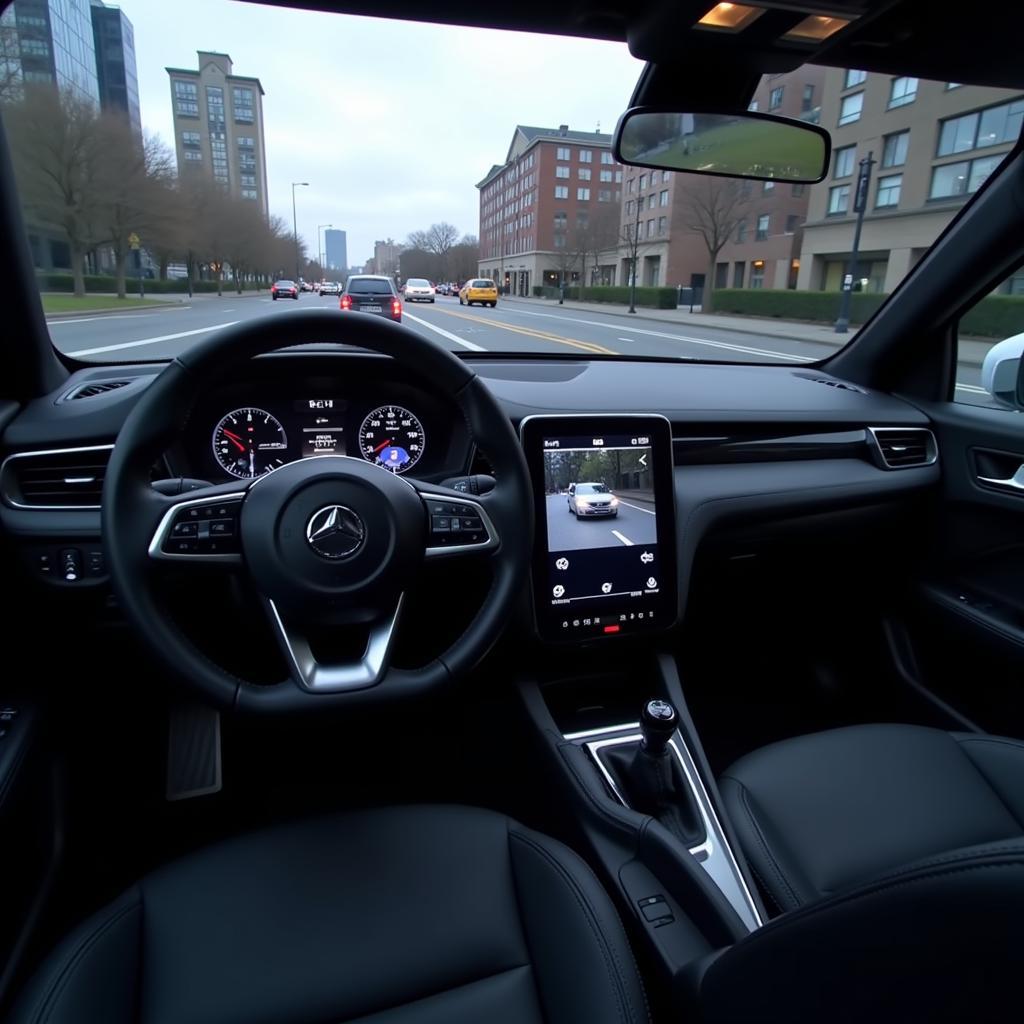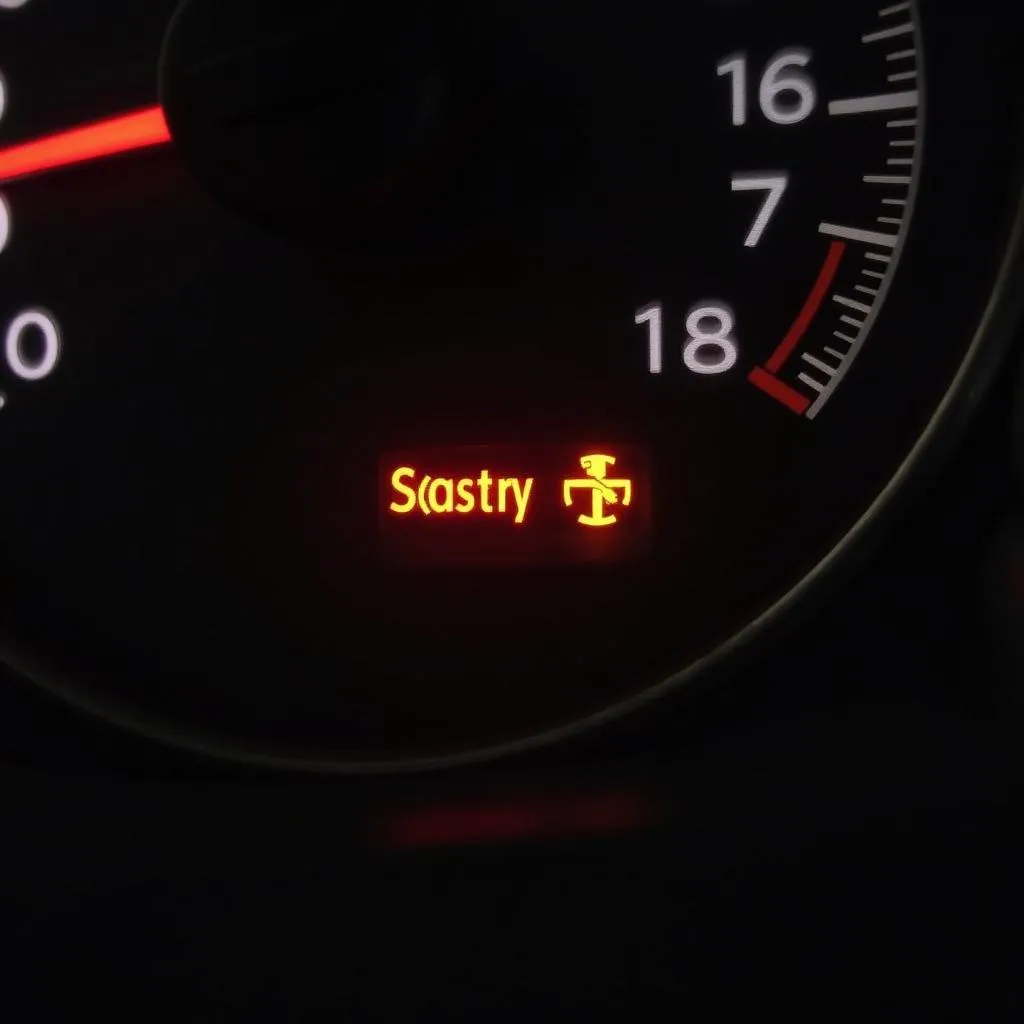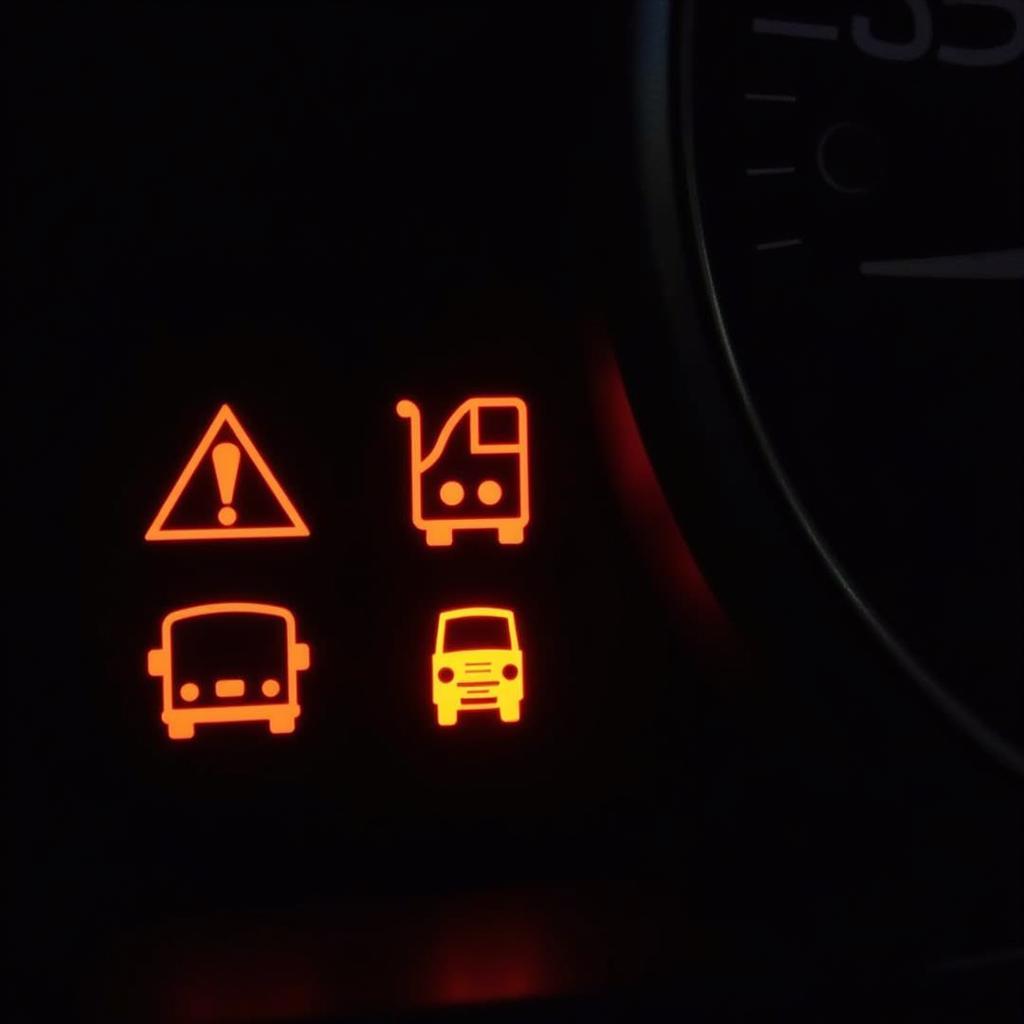The smart city brake support warning light is a safety feature found on many modern vehicles. It’s part of a system designed to help prevent or mitigate low-speed collisions, typically in urban environments. But what does it mean when this light pops up on your dashboard? This comprehensive guide delves into the intricacies of the smart city brake support warning light, covering its functions, common causes, and troubleshooting steps.
Understanding Smart City Brake Support
Smart city brake support systems utilize sensors, often cameras and lasers, to monitor the distance between your vehicle and the one in front. If the system detects an impending collision, and the driver doesn’t react, it can automatically apply the brakes to avoid or reduce the severity of an impact.
 Smart City Brake Support System in Action
Smart City Brake Support System in Action
What Triggers the Smart City Brake Support Warning Light?
While the illumination of this warning light might seem alarming, it doesn’t always signify a malfunction. Here are the common reasons why the smart city brake support warning light might turn on:
- System Activation: The most frequent reason is that the system has activated to prevent a collision. If you had to brake suddenly, or the system sensed an obstacle, it might have engaged.
- Sensor Obstruction: Dirt, debris, snow, or ice can accumulate on the sensors, interfering with their ability to accurately judge distances. This often leads to a warning light and potential system deactivation.
- Low Visibility: Heavy rain, fog, or even bright sunlight can sometimes disrupt the sensors’ ability to operate effectively, causing the warning light to illuminate.
- System Malfunction: While less common, a fault within the system itself, such as a sensor failure or software glitch, can trigger the warning light.
 Obstructed Sensor on a Car
Obstructed Sensor on a Car
Troubleshooting the Smart City Brake Support Warning Light
If the warning light appears, here’s a step-by-step guide to help you troubleshoot the issue:
-
Check Your Surroundings: If you had to brake abruptly or were in a situation where a collision was possible, the system likely activated as intended. Ensure your path is clear and no obstacles are present.
-
Inspect the Sensors: Carefully examine the sensors (usually located on the front grille or windshield) for any dirt, debris, or obstructions. Clean them gently with a soft cloth.
-
Restart the Vehicle: Sometimes, a simple system reset can resolve temporary glitches. Turn off your vehicle, wait a few minutes, and then restart it to see if the warning light disappears.
-
Consult Your Owner’s Manual: Your vehicle’s manual will have specific information about the smart city brake support system, including troubleshooting tips and when to contact a dealer.
-
Seek Professional Diagnosis: If the warning light persists despite these steps, it’s crucial to have your vehicle inspected by a qualified technician. They have the diagnostic tools to pinpoint and address any underlying issues.
Importance of Addressing the Warning Promptly
Ignoring the smart city brake support warning light can have significant consequences:
- Increased Risk of Collisions: A malfunctioning system may not activate when needed, increasing the likelihood of an accident.
- Higher Repair Costs: Delaying repairs can exacerbate the problem, potentially leading to more extensive and costly repairs down the line.
- Safety System Deactivation: In some vehicles, if the system detects a fault, it might automatically deactivate itself as a safety precaution, leaving you without this crucial safety net.
mazda 3 smart city brake support warning light
Tips for Maintaining Your Smart City Brake Support System
- Regular Cleaning: Periodically clean the sensors with a soft, damp cloth to remove dirt and grime.
- Avoid Obstructions: Be mindful of where you park and avoid situations where the sensors might become blocked.
- Schedule Maintenance: Incorporate checks of the smart city brake support system during routine vehicle maintenance.
Expert Insight
“Drivers often underestimate the importance of maintaining their advanced driver-assistance systems,” says automotive electronics expert, John Miller. “These systems rely on sophisticated sensors and software that require regular attention to ensure optimal performance and safety.”
Conclusion
The smart city brake support system is a valuable safety feature that can help prevent accidents. Understanding its functionality and addressing any warning lights promptly is crucial for ensuring your safety and the well-being of others on the road. By following the troubleshooting tips outlined in this guide and seeking professional assistance when needed, you can keep this crucial safety system functioning as intended.
FAQs about Smart City Brake Support Warning Lights
1. What should I do if the warning light turns on while driving?
If safe to do so, pull over and check your surroundings. Inspect the sensors for obstructions and consult your owner’s manual. If the light persists, contact a mechanic.
2. Can I temporarily disable the smart city brake support system?
Most vehicles allow you to temporarily disable the system through the infotainment settings. However, it’s generally not recommended to do so.
3. Does the smart city brake support system work in all weather conditions?
While designed to function in various conditions, extreme weather like heavy snow or fog can affect its performance.
d forward collision warning with brake support
4. Is the smart city brake support system the same as autonomous driving?
No, smart city brake support is a driver-assistance feature, not a substitute for attentive driving. You should always remain in control of your vehicle.
5. How much does it cost to repair a faulty smart city brake support system?
Repair costs vary depending on the issue. Sensor replacements can range from a few hundred dollars to over a thousand, while software issues might require specialized diagnostics.


